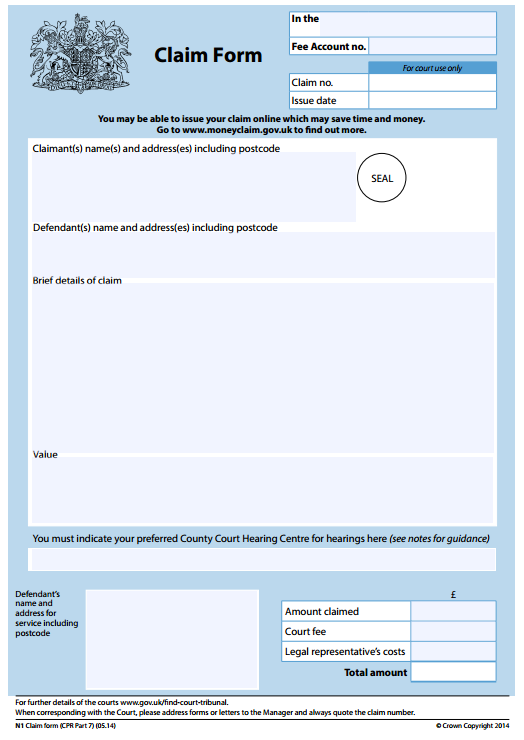Civil Court Claim Form – It is possible that you will be required to fill out a variety of forms when you’ve been chosen to represent the client in a civil court dispute. You may be required to submit them as hardcopies or download the forms on the court’s website. Other forms online may be available. But you must ensure that they are appropriate for your specific situation before using the forms.
Fill in the blanks of this form
The Supreme Court Administrative Office (SCAO) has a large inventory of unfilled court forms that are organized according to the nature of the legal matter. You can look them up by their number or name.
If you want to create a legal document, the first thing to do is find a form that addresses your situation. The case titles and names of the parties are separated on certain forms with spaces.
Before you complete a form, be sure to carefully review the instructions. You may be asked to sign in specific circumstances. In other instances you may also require an indication of how the documents have been served. You should ensure that you have copies that are single-sided as well. It won’t be necessary to duplicate the papers again if you do this later on.
Request restricted status for an electronic document
It could be challenging to get restricted status on electronic civil court form. Everything from legitimacy to compliance to a specific format standard are all considered. It’s essential to look over the Minnesota Supreme Court regulations as and the rules of your particular court to make sure you’re adhering to all regulations.
For electronic filing the document should be readable and include a stamped certificate. Additionally, the document must be handed over to the clerk of the county within an addressed envelope. The document will be checked for authenticity if there are any questions.
EFCIV23 forms are required in order to inform the parties that your electronic submission has been changed. In exceptional circumstances, you must also serve this form with your commencement paperwork.Additionally, you must use EDDS to submit the paperwork to the court.
Send the original copies of your exhibits.
In certain countries, you might be required to present exhibits in physical copy before the judge. The documents you submit are usually submitted via the internet. This means that , if the paper version of your electronic documents is required to be displayed in a courtroom, you will need to give it to the court.
To the best of your abilities You must fill out all the court forms. The exact and precise filling out each section on the forms is required. There is often a lot of space left in the forms’ shapes. It is always an excellent idea to speak with a lawyer prior to filling out the form if you’re unclear about the best way to fill it in.
Hard copy exhibits must be delivered to all parties , with an accompanying document such as the Notice of Hard Copy Exhibit Submission. It is possible to use a web-based service such as Odyssey File and Serve or the EDDS mail system to serve.
Some online forms might not be suitable for your needs.
If you’re interested in making use of online court forms, you need to first consult with an attorney. This will allow you to consider your options and safeguard your rights. If you do not retain legal counsel, you’ll be in charge of your legal affairs. You could be subject to disciplinary actions or civil fines, including those for practicing law without authorization.
Some courts offer self-help materials via their websites. Other courts do not. For instance, certain forms were developed by the Alaska Court System. One of these forms can be found here The complaint form. Another form can be found here online complaint forms.
As soon as you have completed your form you can print it and give it to the court in which the case is hearing. Additional forms are available on the court’s website. Some of these require the use of computer software. Computer programs are developed to pose questions, collect information, and create forms.


